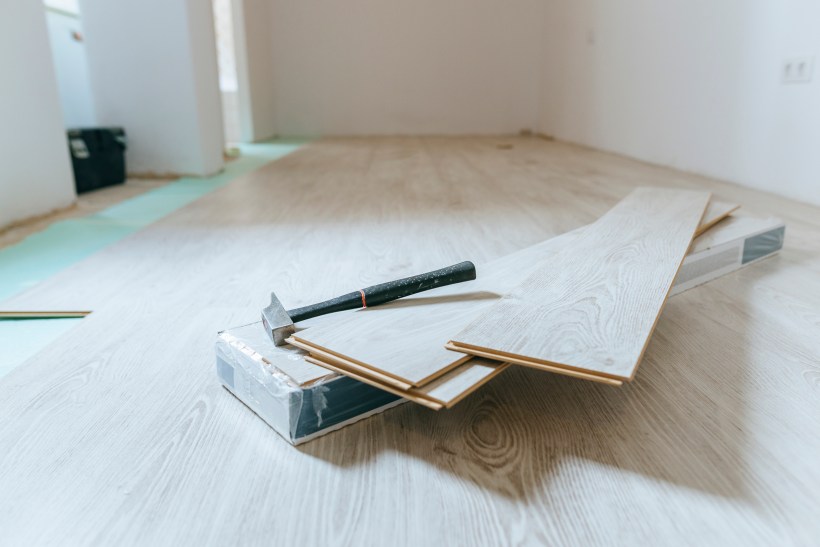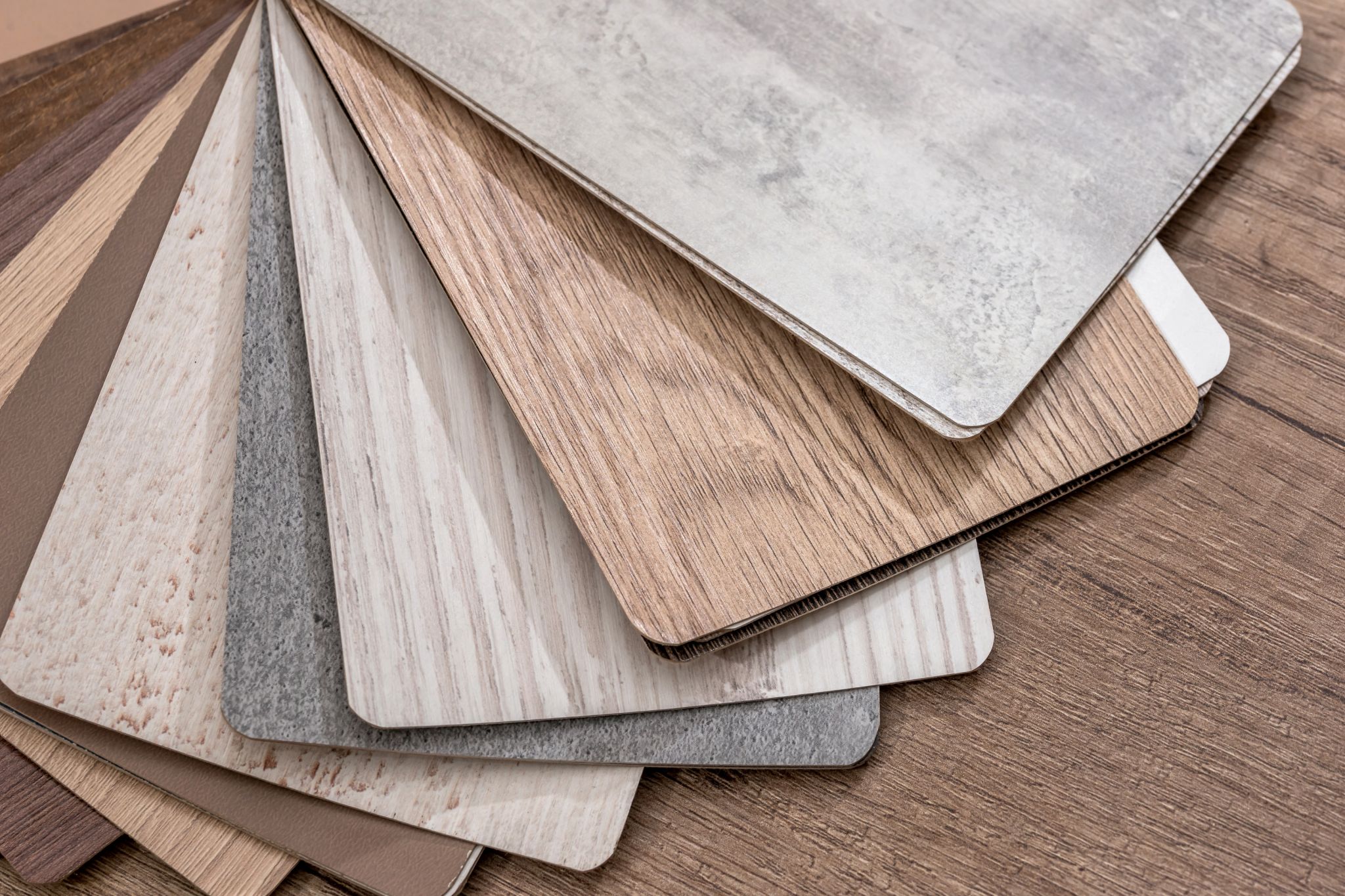If you have pets or kids or are generally accident-prone, you may need some heavy-duty floors. And you may be exploring laminate flooring, thanks to its durability. Laminate flooring balances that resistance to wear and tear with an attractive style and easy DIY installation.
That’s why some homeowners are choosing laminate instead of hardwood or tile. But which option is best for you? You can make an informed choice for your home by learning the pros and cons, types of laminate flooring, and the average cost.
When Does Laminate Flooring Make Sense?
Modern laminate flooring can be as appealing as some hardwoods but more durable, especially in high-traffic areas. While laminate was once confined to kitchens and game rooms, its fresh looks can work in dining rooms, living rooms, or even bedrooms.
Older laminates carry the risk of contaminants like formaldehyde or volatile organic chemicals (VOCs), but the U.S. Environmental Protection Agency now regulates modern laminate construction. To avoid harmful chemicals, look for products with a Toxic Substances Control Act Title VI compliance label. And ask a health care professional how laminates may affect some household members who have chemical sensitivities.
Here’s a look at some of the pros and cons of laminate flooring:
Pros of Laminate Flooring
- Durable: Laminate floors are easy to clean and maintain. They have a wear layer that protects the flooring from dents or scratches from everyday occurrences like dropped toys and contact with untrimmed pet claws.
- Sustainable: Because laminate flooring is made from wood, it’s recyclable and sustainable.
- Easy to install: Laminate floors are designed with interlocking boards, making them simple to install. They can also “float” over existing hardwood floors, so you don’t need to replace your existing floors to install them.
Cons of Laminate Flooring
- Difficult to repair: Laminate flooring can’t be refinished or resanded. So, if you have a permanent scratch, dent, or stain, you’ll have to replace that section of your flooring.
- Susceptible to water damage: Standing water will cause lasting swelling and damage. This means laminate floors may not be the best idea for your kitchen or laundry room.
- Sensitive to humidity: When indoor humidity is higher than 60%, laminate boards can expand and push against one another. This may cause ridges along the seams or bulges in the middle of the boards. But when the humidity drops below 30%, boards can shrink and the joints may separate. Proper installation can avoid these issues.
- Slippery: Laminate floors have been known to be extremely slippery when wet. If you have pets or children, factor this into your decision about laminate. Anti-slip sprays and finishes are available, though, to counteract the problem.
How Much Does Laminate Flooring Cost?

Laminate flooring prices vary depending on the style and design, but the average cost per square foot will be between 68 cents for styles like acacia and cherry and $1.60 for options like elm and hickory. Some laminate flooring includes features that add to the cost, such as water and noise resistance, and attached underlayment.
You’ll also pay installation fees if you use a contractor. They can vary depending on your region, your home’s size, and your project needs.
How Long Will Laminate Flooring Last?
Most manufacturers will provide a 10-year warranty for laminate floors. With proper care, the floors may last even longer than that.
Watch for signs that your laminate floor needs replacing. For example, swelling from water damage or buckling from excessive pressure signals the need to call a professional.
Types of Laminate Flooring Options
The types of laminate flooring mainly relate to the installation process, such as:
Glueless or Click Laminate Flooring
This laminate flooring uses interlocking pieces, so you don’t need glue to install.
Pre-glued Laminate Flooring
The glue is already applied to the planks, so installation is simpler.
Glued Laminate Flooring
The oldest form of laminate flooring, this option requires gluing and doesn’t have a locking system.
Alternatives to Laminate Flooring

If any of your household members have chemical sensitivities, consider alternatives to laminate flooring. Several flooring options have similar features to laminate floors, including:
- Luxury vinyl planks: These planks are generally thicker and more durable than standard vinyl planks. Click-lock floating installation helps the flooring last longer and look more like real wood. But the plank material -- several layers of vinyl and often a urethane layer -- isn't sustainable, according to FixR.
- Porcelain tile: For rooms with heavy moisture, porcelain tile is a strong alternative. But while the prices of tile and laminate are comparable, tile installation is typically more expensive.
- Engineered wood: Although engineered wood is more expensive than laminate flooring, it can be a good choice for homeowners who want the durability of laminate with a more realistic hardwood look.
Questions to Ask Your Laminate Flooring Contractor
Laminate floor installation can be an easy or intermediate task for DIYers. However, if your home has oddly shaped rooms, needs carpet removed, or calls for a lot of labor for a flooring job, look for a reputable contractor.
- Whether laminate flooring is the best choice for each room where you’re considering new flooring
- To provide the costs for contractor installation
- If there’s a warranty on flooring and installation
Ready to jump in on your remodel? Get some inspiration, in addition to the info on pros, cons, and costs.
